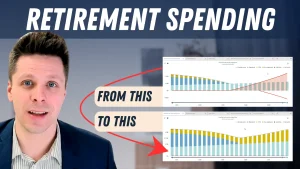How does retiring with a pension affect your retirement plans?
There are numerous advantages from a tax perspective, and it can also change how much and when you spend your retirement savings.
Follow along as we go through the different ways to maximize the flexibility a pension gives you in retirement.





